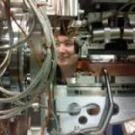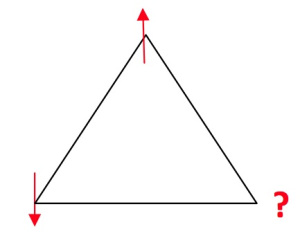Hero and a villain – Jarosite
What does it look like?
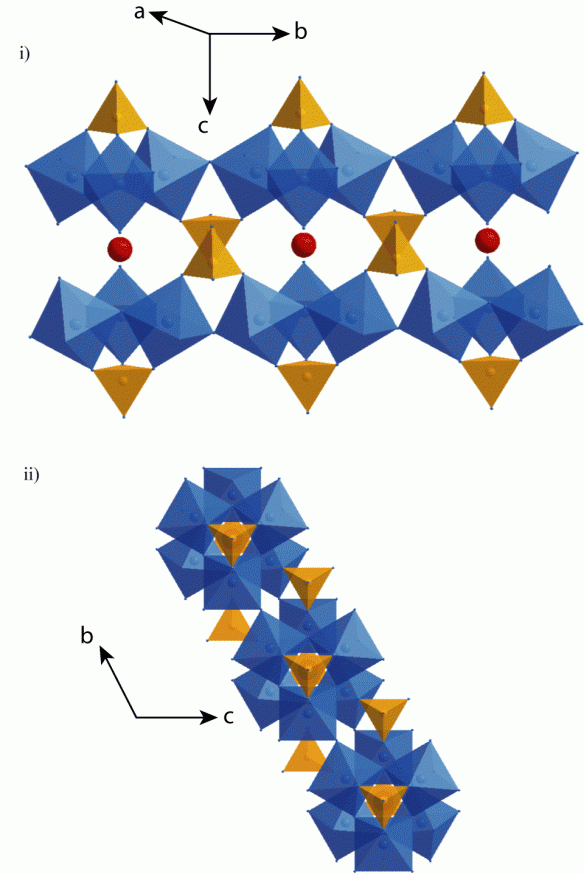
Jarosite structure drawn using Diamond Visualisation software viewed in the a-b plane.
What is it?
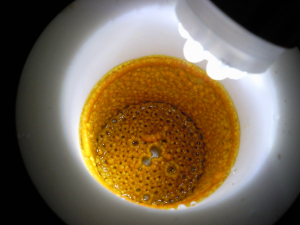
Synthetic jarosite grown hydrothermally.
Jarosite is a potassium iron sulphate hydroxide. It occurs in lots of settings, both naturally and as part of industrial processes. In industry it can be both a hero and a villain.
In zinc making plants jarosite is formed as a way of removing unwanted iron from the processing solution, so here it is a hero and these companies are trying to find ways of making jarosite form faster so that they can speed up their processes and lower costs.
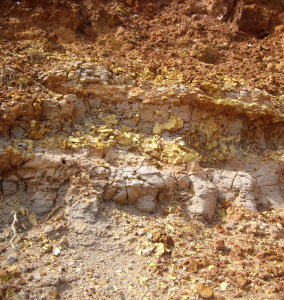
Jarosite in nature. (Fossil beach,Victoria)
In contrast, in other systems that produce metals by bioleaching, sometimes jarosite is formed as a by-product when the bacteria convert Fe2+ to Fe3+. In this case, the jarosite will then go on to form a layer which prevents the bacteria getting to more Fe2+ to convert and so the process stops. In this case, these companies are actively trying to prevent the villainous jarosite forming.
Jarosite research has become fashionable lately thanks to the detection of jarosite on Mars by the MER rover Opportunity. Jarosite was the first hydrated mineral to be detected on Mars so it got a lot of people, especially the astrobiologists, very excited.
The jarosite structure consists of layers of corner sharing iron octahedra which form a Kagomé net. This arrangement of antiferromagnetic iron leads to some interesting magnetic properties as the magnetic moments of the iron cannot sit opposite each other and cancel each other out as they would like; they are at 120° to each other and become "frustrated" at not being able to move to a more favourable position; see the figure to the left.
The layers of iron octahedra are linked above and below by sulphate tetrahedra which share corners with the iron octahedra. This produces a cavity between the sulphate tetrahedra where a large cation such as potassium can sit.
Lots of things can be substituted into the jarosite structure, instead of potassium on the "A" cation site you can also have Na, H3O+, Pb, Ag, NH4+ etc., and instead of iron on the "B" site you can have aluminium. Indeed, jarosite is really part of the larger structural group of "Alunite" minerals, and instead of a SO4 you can have an arsenate (AsO4) group… and numerous other combinations!
Where did the structure come from?
This incarnation of the structure is by Basciano and Peterson (2007) http://rruff.info/doclib/am/vol92/AM92_1464.pdf. It can be found in the American Mineralogist crystal structure database.



